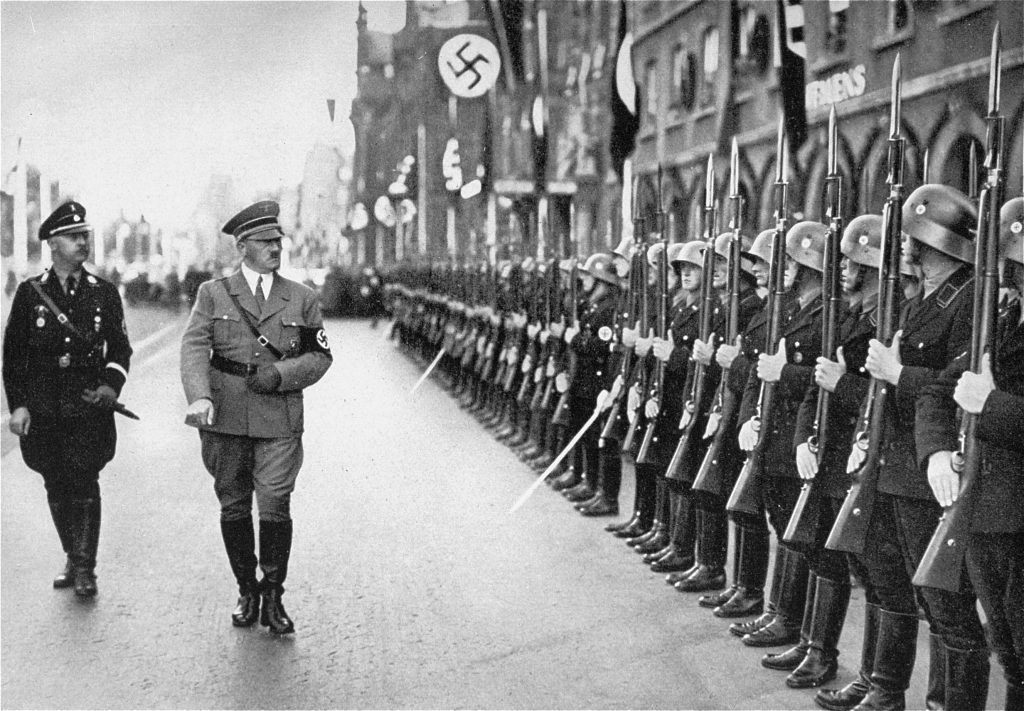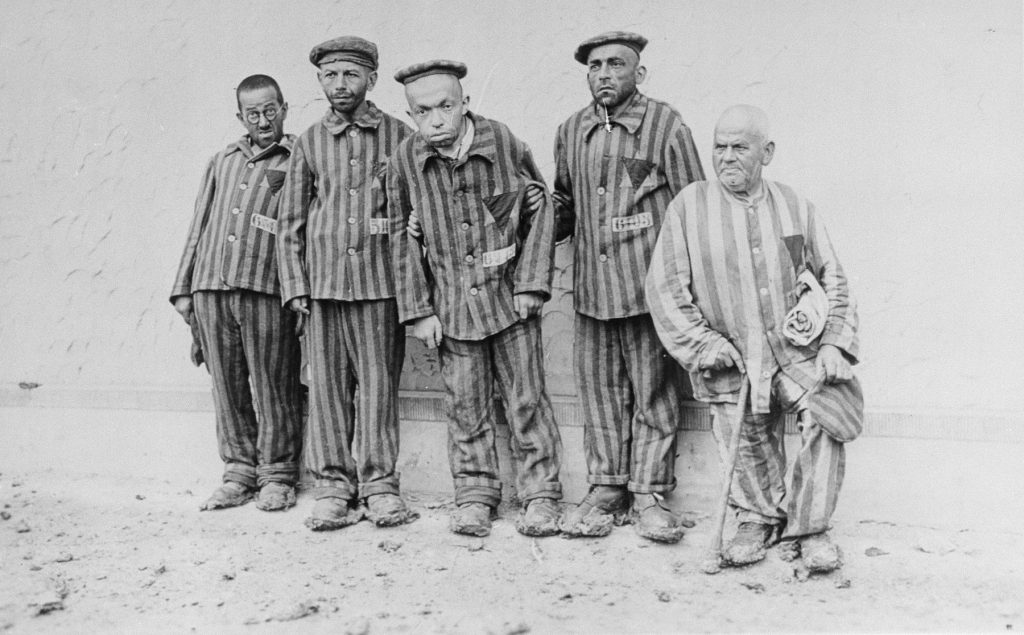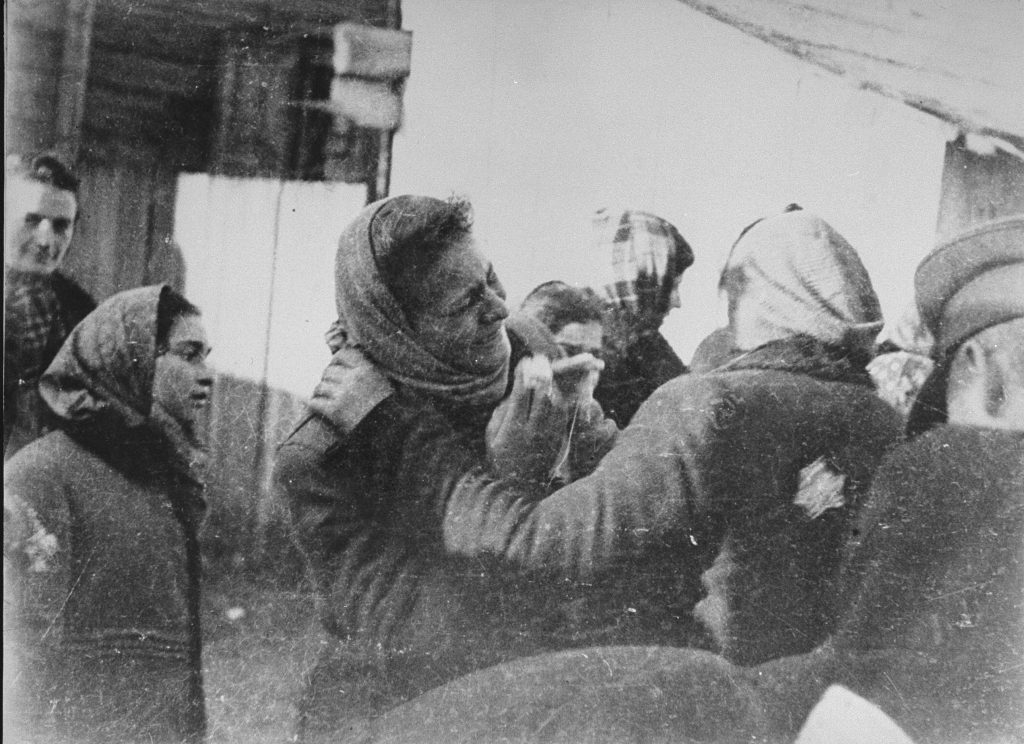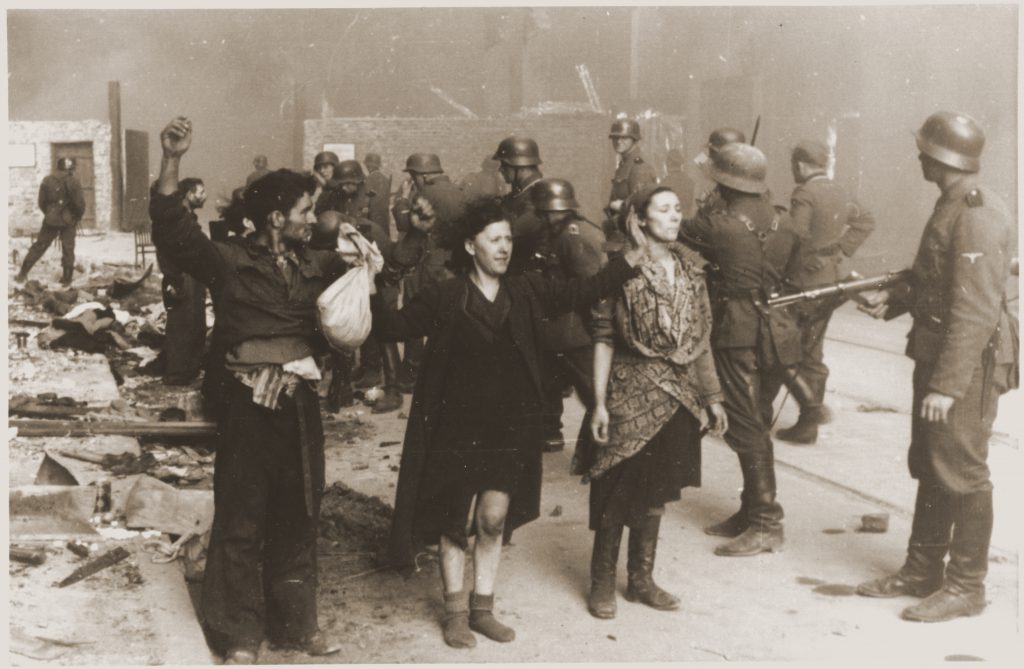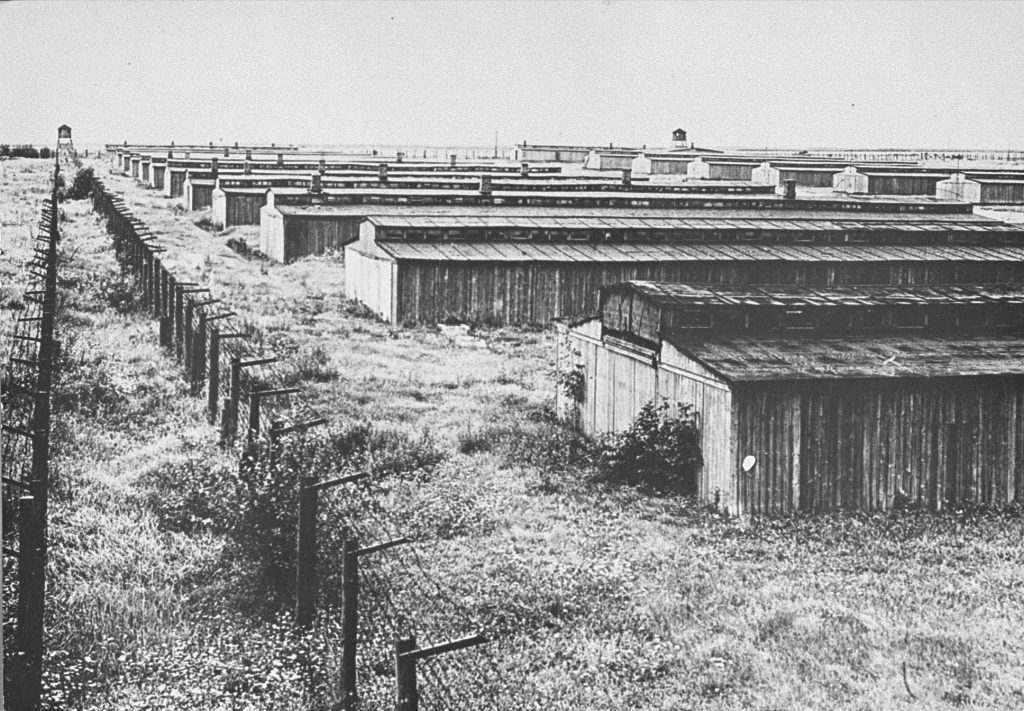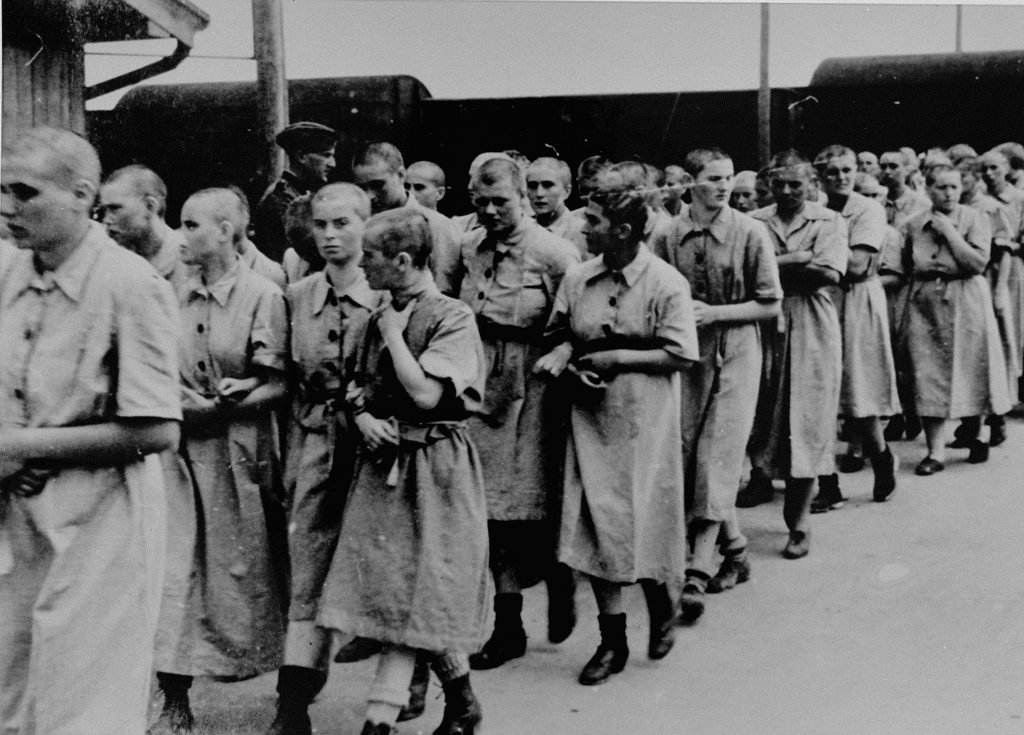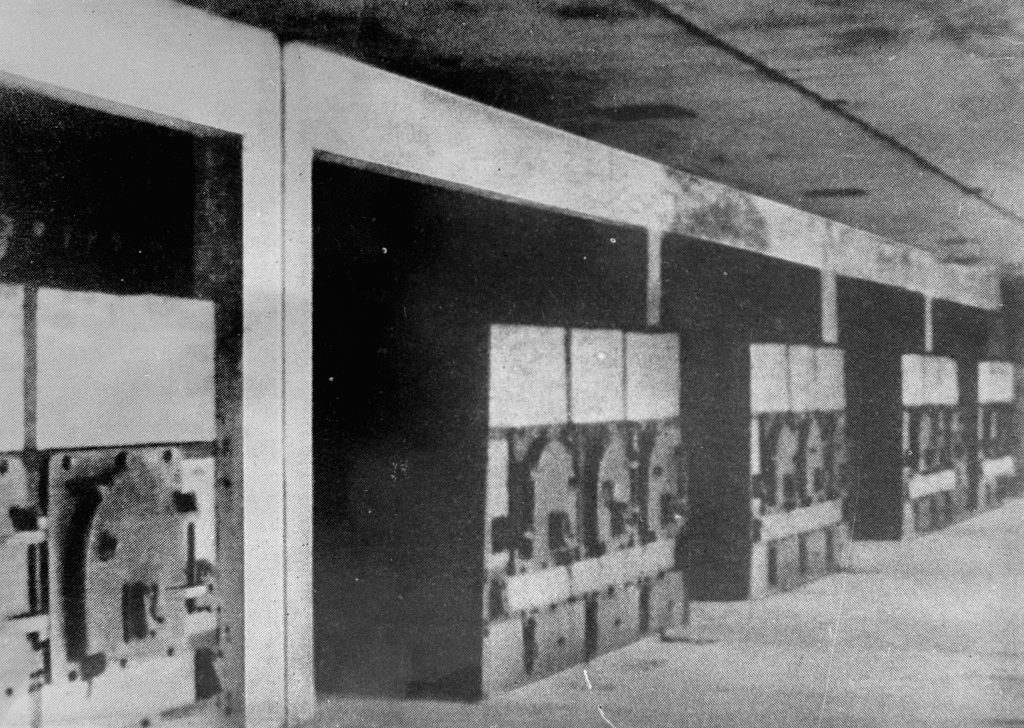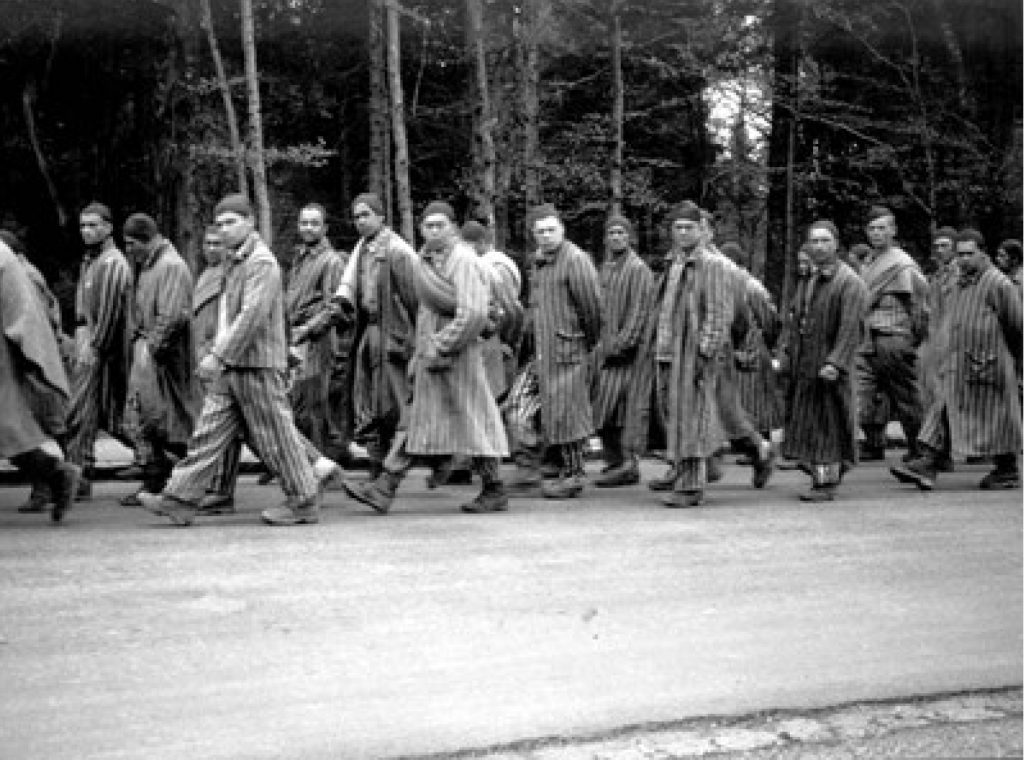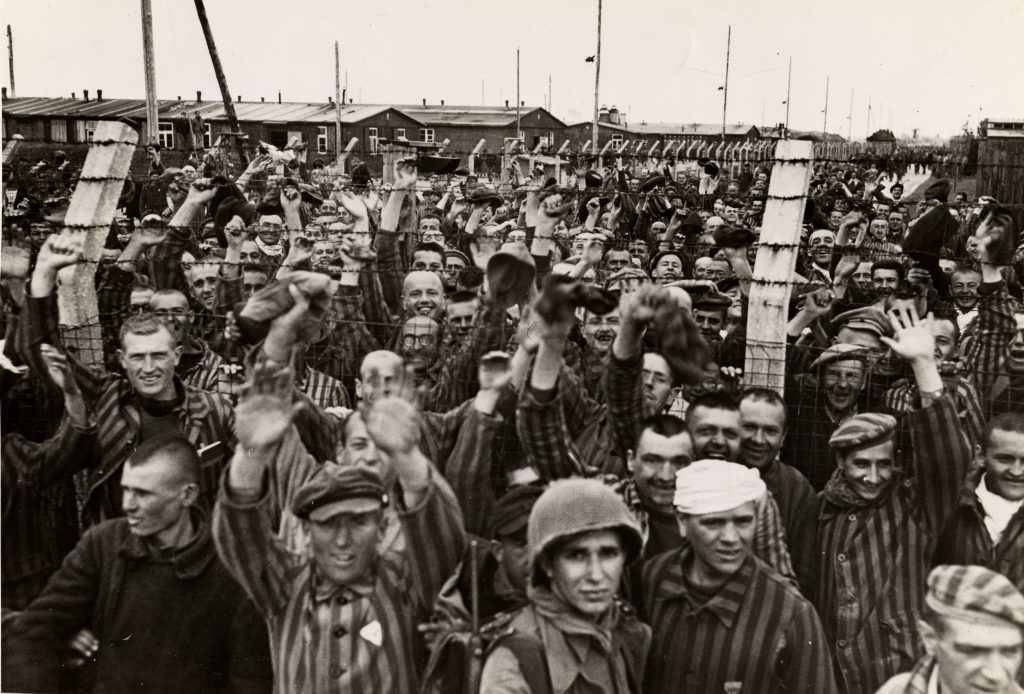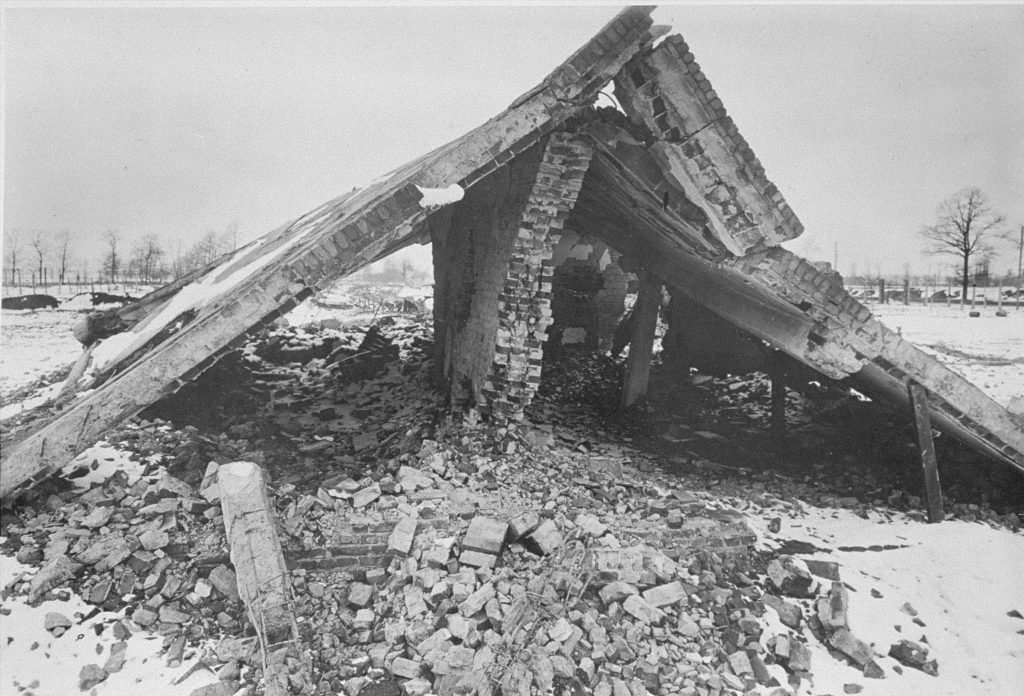Introduction to the Exhibit
Approximately 44,000 concentration camps and ghettos existed across Nazi-occupied Europe and North Africa during World War II. These incarceration sites, which Adolf Hitler used as a mechanism to terrorize and eliminate non-Aryan groups (those seen as “subhuman,” “useless eaters,” and not part of the pure, white, Germanic race), ranged from small barns to compounds with populations of a medium-sized city. These extensive networks of ghettos, transit camps, women’s camps, forced labor camps, and extermination camps, to name a few, played a central role in the Holocaust—the annihilation of six million Jews—as well as the mass murder of millions more Poles, Roma and Sinti, homosexuals, people with disabilities, social outcasts, Jehovah’s Witnesses, as well as other political and religious opponents.

Beginning of Part 1
The origins of Nazi concentration camps began with Adolf Hitler’s political rise and eventual consolidation of power in 1933. Hitler, who first was appointed as chancellor before declaring himself the supreme leader of Germany (“Führer”), was obsessed with racial purity—partially inspired by the United States’ racist history and its eugenics movement —and believed that it was Germany’s destiny to rule the world. At first, few people took him seriously, but things drastically changed during a global depression in the 1930s that left millions of Germans unemployed after their defeat in World War I. Hitler and the National Socialist German Workers’ Party (also known as the Nazis), gained popularity by promising a better life and restoring Germany’s greatness with a new empire, the “Third Reich.”
Continue reading about The Nazi Strategy of Concentrating People
Beginning of Part 1
The origins of Nazi concentration camps began with Adolf Hitler’s political rise and eventual consolidation of power in 1933. Hitler, who first was appointed as chancellor before declaring himself the supreme leader of Germany (“Führer”), was obsessed with racial purity—partially inspired by the United States’ racist history and its eugenics movement —and believed that it was Germany’s destiny to rule the world. At first, few people took him seriously, but things drastically changed during a global depression in the 1930s that left millions of Germans unemployed after their defeat in World War I. Hitler and the National Socialist German Workers’ Party (also known as the Nazis), gained popularity by promising a better life and restoring Germany’s greatness with a new empire, the “Third Reich.”
Continue reading about The Nazi Strategy of Concentrating People
Image: Adolf Hitler and Nazi SS Chief Heinrich Himmler review the SS at a Reichsparteitag ceremony (Reich Party Day) in Nuremberg, Germany, September 1935. Photo credit: USHMM #11775
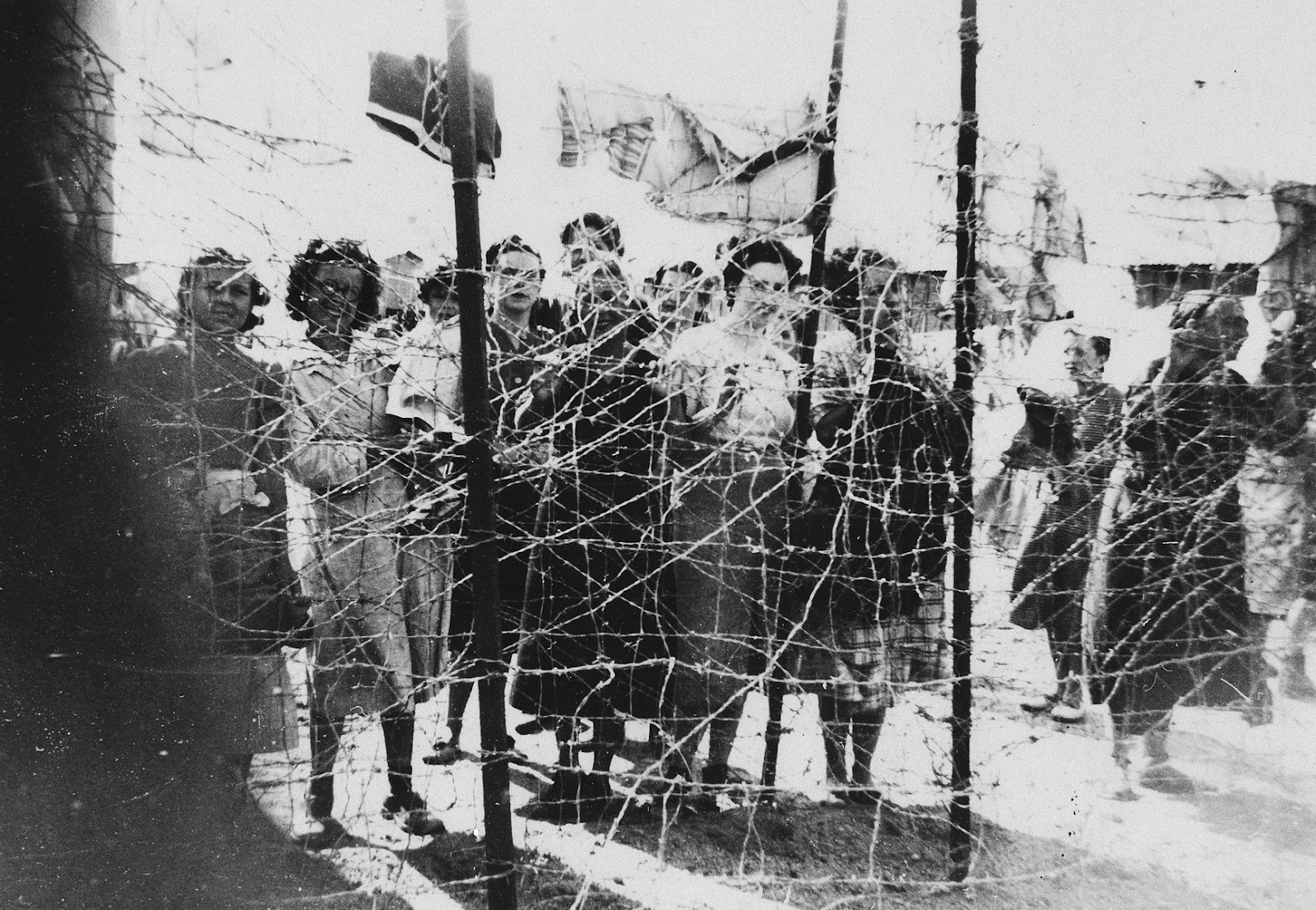
Beginning of Part 2
Approximately 100,000 to 200,000 political opponents and critics of the Nazi party were seized within a year of Hitler’s election, while many other groups were targeted in later years, including Jews, Jehovah’s Witnesses, homosexuals, Roma and Sinti, and so-called “asocial” people. These people were held in concentration camps, sites that operated outside of normal laws, as the Third Reich perfected a system of permanent terror.
Continue reading about Early Nazi Incarceration Sites (1933-1939)
Beginning of Part 2
Approximately 100,000 to 200,000 political opponents and critics of the Nazi party were seized within a year of Hitler’s election, while many other groups were targeted in later years, including Jews, Jehovah’s Witnesses, homosexuals, Roma and Sinti, and so-called “asocial” people. These people were held in concentration camps, sites that operated outside of normal laws, as the Third Reich perfected a system of permanent terror.
Continue reading about Early Nazi Incarceration Sites (1933-1939)
Image: Female prisoners gather at the barbed wire fence surrounding the Gurs concentration camp in Southern France, circa 1939-1940. Photo credit: USHMM #65543
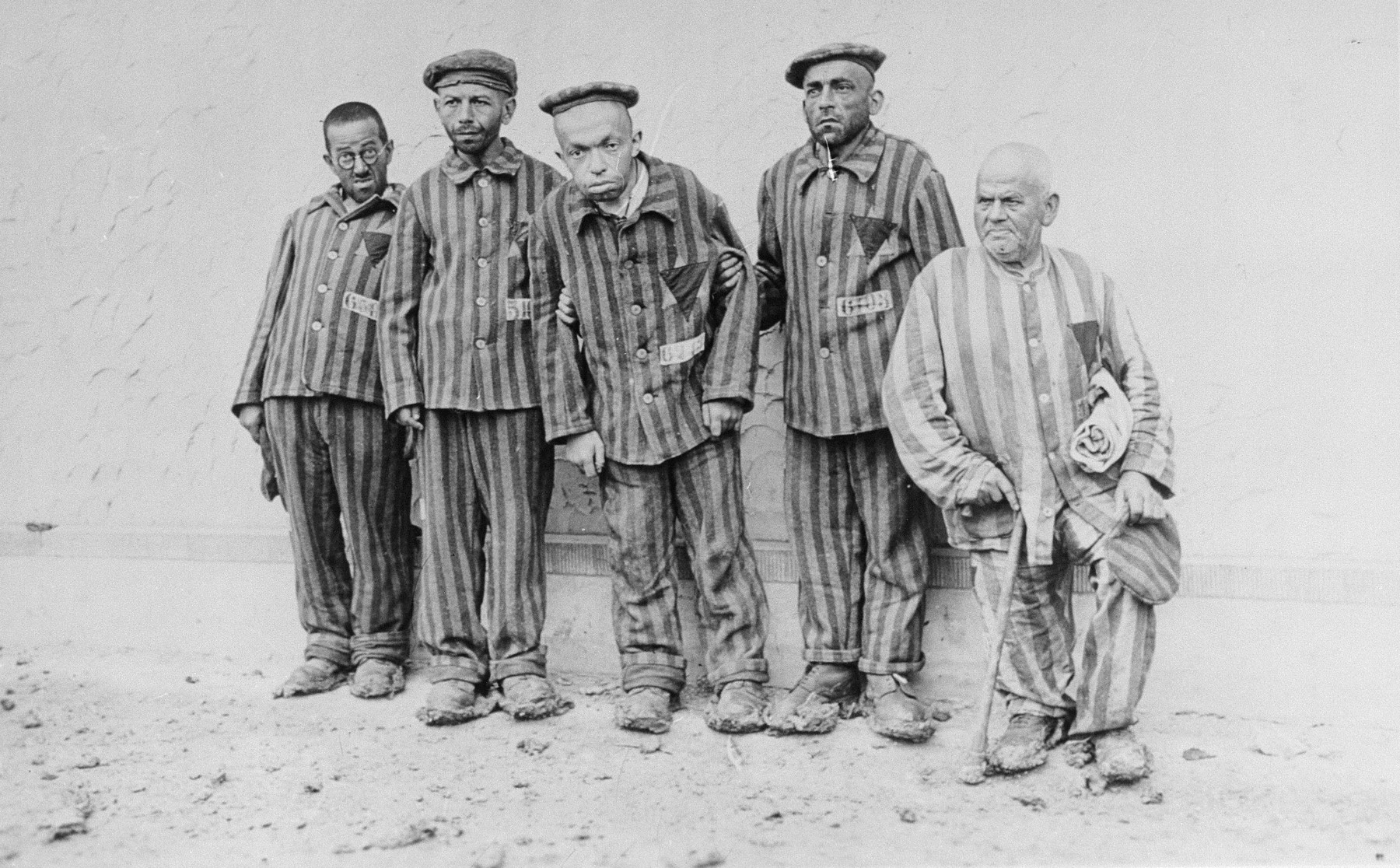
2A: The Murder of Children and the Developmentally Disabled
The Nazis considered people with disabilities to be “useless eaters” and a burden on the Aryan race. In order to purify German society, Hitler authorized the secret killing of psychiatric patients beginning in October 1939. The Nazi Euthanasia Program became known as Aktion T4 (named after the coordinating Chancellery office at Tiergartenstrasse 4 in Berlin) and marked Nazi Germany’s first campaign of mass murder. T4 initially targeted developmentally disabled infants and toddlers in Germany, but later included adults with disabilities all across Europe.
Continue reading about The Murder of Children and the Developmentally Disabled
2A: The Murder of Children and the Developmentally Disabled
The Nazis considered people with disabilities to be “useless eaters” and a burden on the Aryan race. In order to purify German society, Hitler authorized the secret killing of psychiatric patients beginning in October 1939. The Nazi Euthanasia Program became known as Aktion T4 (named after the coordinating Chancellery office at Tiergartenstrasse 4 in Berlin) and marked Nazi Germany’s first campaign of mass murder. T4 initially targeted developmentally disabled infants and toddlers in Germany, but later included adults with disabilities all across Europe.
Continue reading about The Murder of Children and the Developmentally Disabled
Image: Developmentally disabled Jewish prisoners, photographed for propaganda purposes, who arrived in the Buchenwald concentration camp in Germany after Kristallnacht, 1938. Photo credit: USHMM #13132, courtesy of Robert A. Schmuhl
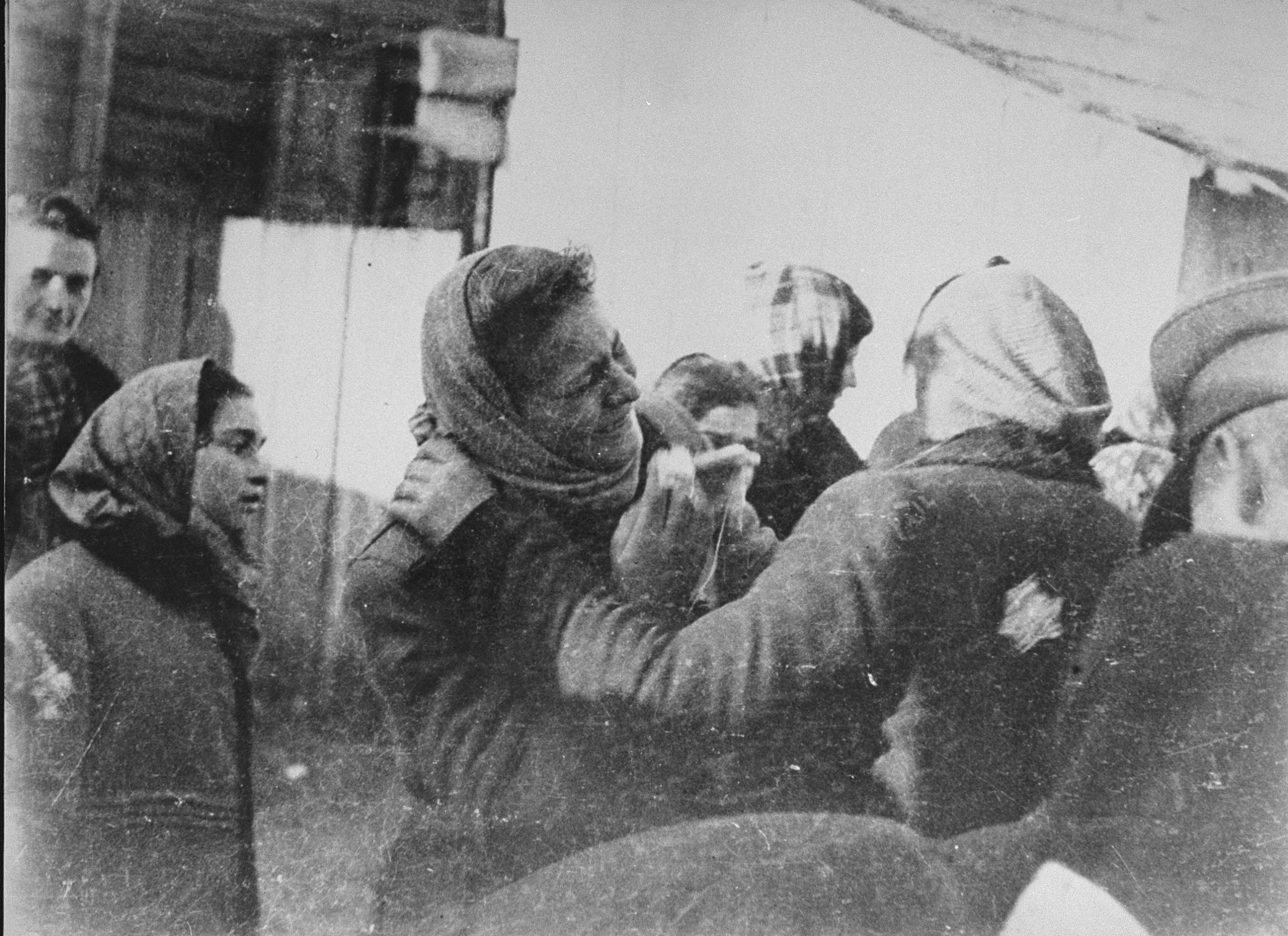
Beginning of Part 3
In September 1939, after the Nazis started World War II with the invasion of Poland, the Nazi system of incarceration became increasingly deadly. The Germans began by targeting Polish politicians, military officials, Catholic clergy, and intellectuals. Over the next few years, particularly after the Nazis invaded the Soviet Union in 1941, the Third Reich brutalized millions of Slavic and Jewish civilians as they sought to colonize Eastern Europe.
Continue reading about Creation of Ghettos and Expansion of Camps
Beginning of Part 3
In September 1939, after the Nazis started World War II with the invasion of Poland, the Nazi system of incarceration became increasingly deadly. The Germans began by targeting Polish politicians, military officials, Catholic clergy, and intellectuals. Over the next few years, particularly after the Nazis invaded the Soviet Union in 1941, the Third Reich brutalized millions of Slavic and Jewish civilians as they sought to colonize Eastern Europe.
Continue reading about Creation of Ghettos and Expansion of Camps
Image: Two women bid each other farewell at an assembly point in the Kovno (Kaunas) ghetto during a deportation action to Estonia. Kaunas, Lithuania, October 26, 1942. Photo credit: USHMM #81088

3A: The Final Solution
The Nazis were driven to make Germany free of Jews—what they called the “Final Solution to the Jewish Question.” Initially, they harassed and intimidated the Jews after first taking power in the 1930s, but their plans became increasingly violent over time. After the outbreak of World War II, the Nazis began conceiving of ways to deport Europe’s Jews to remote locations, including Madagascar and Siberia. Hundreds of ghettos were created between 1939 and 1941 to help concentrate Jews for their eventual expulsion, which was originally planned for after the war.
Continue reading about The Final Solution
3A: The Final Solution
The Nazis were driven to make Germany free of Jews—what they called the “Final Solution to the Jewish Question.” Initially, they harassed and intimidated the Jews after first taking power in the 1930s, but their plans became increasingly violent over time. After the outbreak of World War II, the Nazis began conceiving of ways to deport Europe’s Jews to remote locations, including Madagascar and Siberia. Hundreds of ghettos were created between 1939 and 1941 to help concentrate Jews for their eventual expulsion, which was originally planned for after the war.
Continue reading about The Final Solution
Image: Nazi SS leaders Heinrich Himmler (front) and Reinhard Heydrich (center rear) during a trip to Estonia. Photo credit: USHMM #60454.
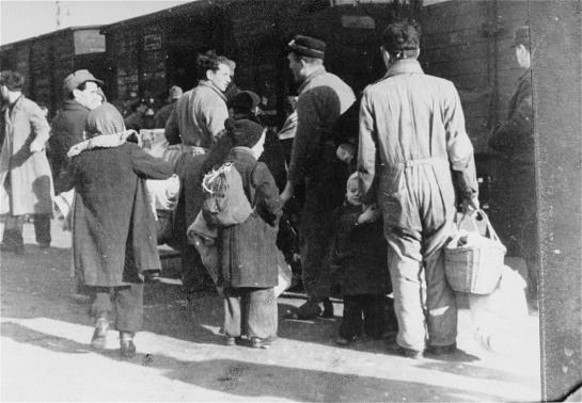
3B: Transit Camps
Millions of non-Aryans were forcibly displaced through transit camps as part of Nazi Germany’s extensive program of population control and mass murder. The Nazis used transit camps as holding pens and transportation hubs near major railway lines. These camps played a particularly prominent role in killing the Jewish population. In Eastern Europe, Jews were largely forced into ghettos prior to their deportation, but in Central and Western Europe, transit camps were used to transport Jews long distances to extermination camps.
Continue reading about Transit Camps
3B: Transit Camps
Millions of non-Aryans were forcibly displaced through transit camps as part of Nazi Germany’s extensive program of population control and mass murder. The Nazis used transit camps as holding pens and transportation hubs near major railway lines. These camps played a particularly prominent role in killing the Jewish population. In Eastern Europe, Jews were largely forced into ghettos prior to their deportation, but in Central and Western Europe, transit camps were used to transport Jews long distances to extermination camps.
Continue reading about Transit Camps
Image: Members of the Ordedienst (Jewish police) supervise the deportation of Jews from the Westerbork transit camp. Photo credit: USHMM #01343
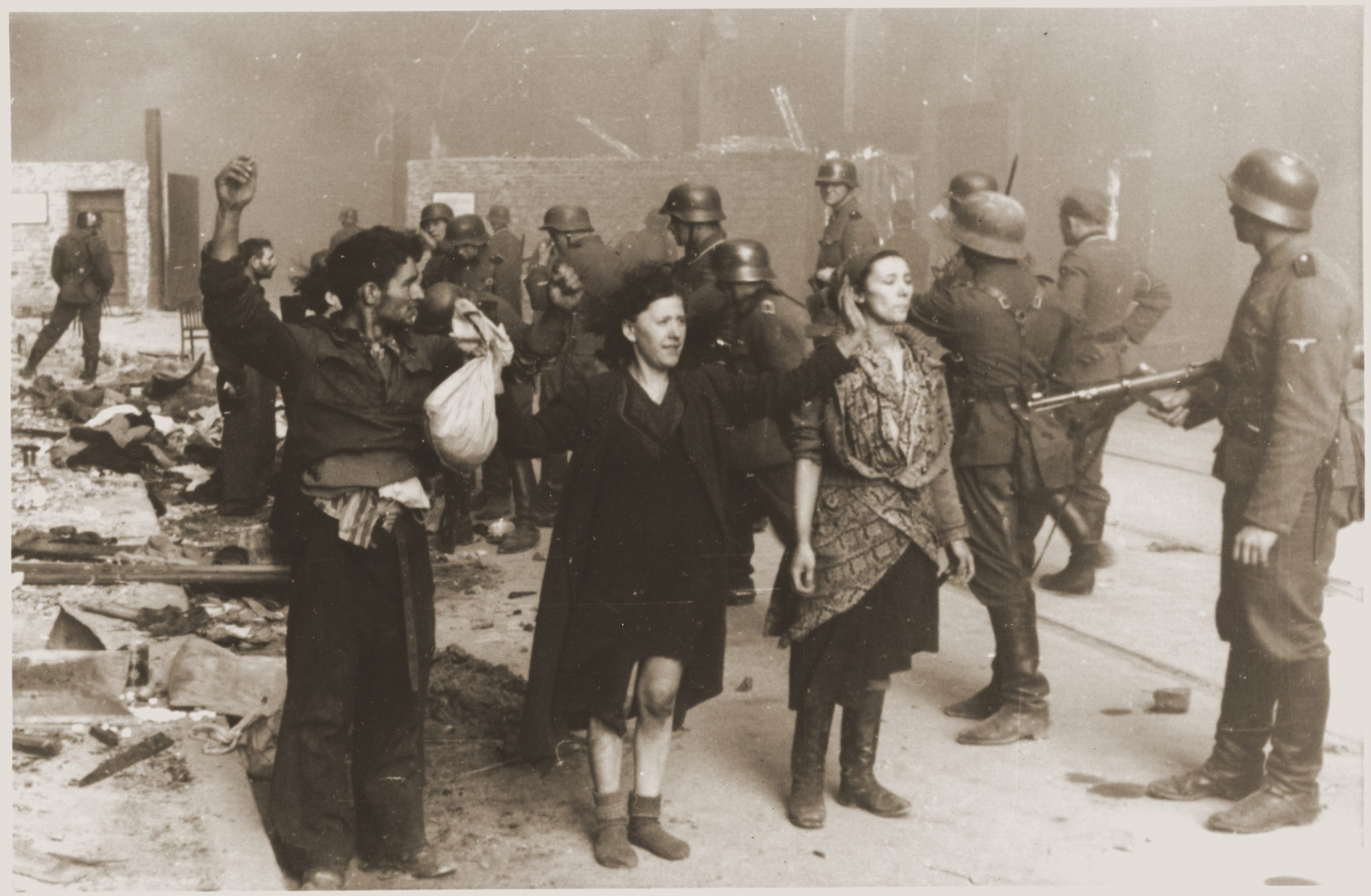
3C: Resistance and Rebellion in Ghettos and Camps
Resistance to Nazi terror occurred throughout the system of camps and ghettos, as it did across Nazi-occupied Europe. Many prisoners engaged in remarkable acts of defiance while under the constant watch of Nazi guards. Prisoners with the same political, religious, or national backgrounds often worked together to thwart Nazi terror. Resistance came in many forms, including armed resistance, spiritual resistance, covert communications, sabotage, or defiance of Nazi orders.
Continue reading about Resistance and Rebellion in Ghettos and Camps
3C: Resistance and Rebellion in Ghettos and Camps
Resistance to Nazi terror occurred throughout the system of camps and ghettos, as it did across Nazi-occupied Europe. Many prisoners engaged in remarkable acts of defiance while under the constant watch of Nazi guards. Prisoners with the same political, religious, or national backgrounds often worked together to thwart Nazi terror. Resistance came in many forms, including armed resistance, spiritual resistance, covert communications, sabotage, or defiance of Nazi orders.
Continue reading about Resistance and Rebellion in Ghettos and Camps
Image: SS troops guard members of the Jewish resistance captured during the liquidation of the Warsaw ghetto, April 1943. Photo credit: USHMM #46193

Beginning of Part 4
The mechanization of Nazi mass murder dramatically increased beginning in 1941, as the Third Reich fought to establish Aryan supremacy and bring a new political order to Europe. This included the liquidation of ghettos, mass deportations, and slaughter of millions. All Jewish people—whom the Nazis considered an existential threat—were singled out for total extermination, which defined the Holocaust. The subjugation of other groups, including Poles, political opponents, and other Slavic peoples, also continued with widespread arrests and mass executions.
Continue reading about Mass Incarceration and Extermination
Beginning of Part 4
The mechanization of Nazi mass murder dramatically increased beginning in 1941, as the Third Reich fought to establish Aryan supremacy and bring a new political order to Europe. This included the liquidation of ghettos, mass deportations, and slaughter of millions. All Jewish people—whom the Nazis considered an existential threat—were singled out for total extermination, which defined the Holocaust. The subjugation of other groups, including Poles, political opponents, and other Slavic peoples, also continued with widespread arrests and mass executions.
Continue reading about Mass Incarceration and Extermination
Image: A section of the prisoners' barracks in Majdanek, a major extermination camp near the city of Lublin in Nazi-occupied Poland, taken sometime after July 24, 1944. Photo credit: USHMM #73996
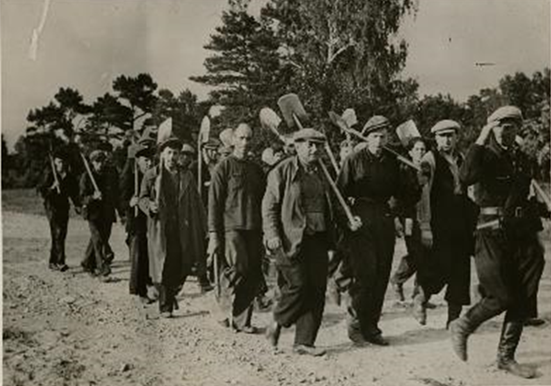
4A: Forced Labor Camps
Forced labor was one of the central components of Nazi occupation. Millions of prisoners were required—against their will—to work for the Third Reich’s war effort, and frequently left to starve in order to ensure that Germans could eat. For the Nazis, the people living in occupied territories only mattered if they served Germany’s interests and strengthened the country’s military might. To this end, Himmler cruelly pointed out, “Whether 10,000 Russian women collapse from exhaustion while digging an antitank ditch only interests me insofar as the antitank ditch is dug for Germany.”
Continue reading about Forced Labor Camps
4A: Forced Labor Camps
Forced labor was one of the central components of Nazi occupation. Millions of prisoners were required—against their will—to work for the Third Reich’s war effort, and frequently left to starve in order to ensure that Germans could eat. For the Nazis, the people living in occupied territories only mattered if they served Germany’s interests and strengthened the country’s military might. To this end, Himmler cruelly pointed out, “Whether 10,000 Russian women collapse from exhaustion while digging an antitank ditch only interests me insofar as the antitank ditch is dug for Germany.”
Continue reading about Forced Labor Camps
Image: A group of Jewish prisoners marching towards forced labor in Liepāja, Latvia, August 1941. Photo credit: USHMM #55155

4B: Women’s Camps and Brothels
Separate camps and compounds were set up exclusively for female prisoners who were considered strong enough for labor projects and menial chores. The largest women’s camp was Ravensbrück (near Berlin), where nearly 120,000 women from across Europe were sent. An estimated 50,000 women died there between 1939 and 1945. A special women’s section was also created in Auschwitz-Birkenau, where 34,000 women died between 1942 and 1943.
Continue reading about Women’s Camps and Brothels
4B: Women’s Camps and Brothels
Separate camps and compounds were set up exclusively for female prisoners who were considered strong enough for labor projects and menial chores. The largest women’s camp was Ravensbrück (near Berlin), where nearly 120,000 women from across Europe were sent. An estimated 50,000 women died there between 1939 and 1945. A special women’s section was also created in Auschwitz-Birkenau, where 34,000 women died between 1942 and 1943.
Continue reading about Women’s Camps and Brothels
Image: Jewish female forced laborers from Subcarpathian Rus march toward their barracks after disinfection and headshaving at the Auschwitz-Birkenau concentration and extermination camp in Nazi-occupied Poland, May 1944. Photo credit: USHMM #77370
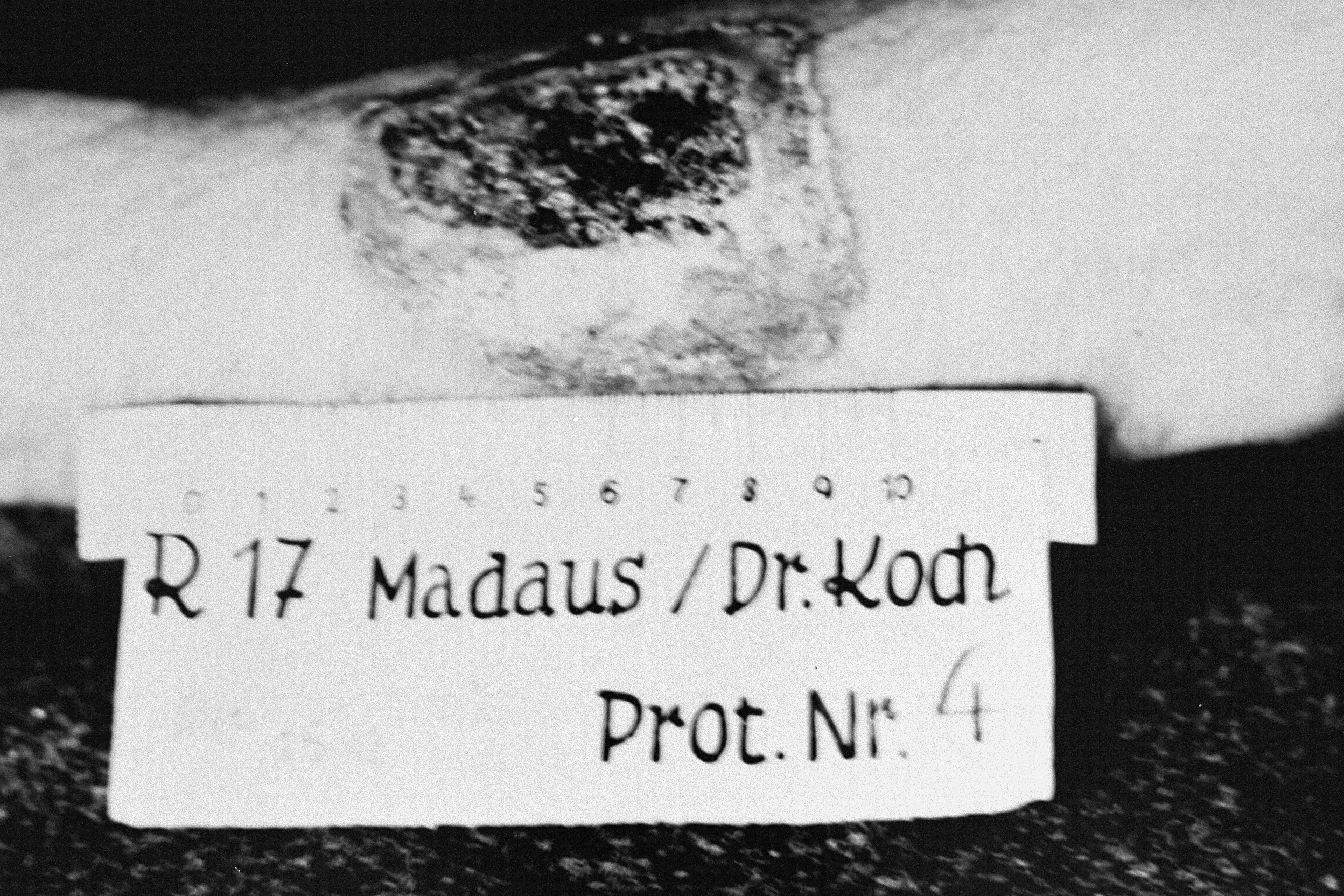
4C: Medical Experiments
German doctors and scientists conducted a series of cruel experiments on at least 7,000 people including Jews, Poles, Roma and Sinti, homosexuals, and other incarcerated groups. Nazi scientists used prisoners’ bodies to test the limits of human physiology, practice surgical treatments, attempt to prove their racist theories, and advance the science of the German war effort.
Continue reading about Medical Experiments
4C: Medical Experiments
German doctors and scientists conducted a series of cruel experiments on at least 7,000 people including Jews, Poles, Roma and Sinti, homosexuals, and other incarcerated groups. Nazi scientists used prisoners’ bodies to test the limits of human physiology, practice surgical treatments, attempt to prove their racist theories, and advance the science of the German war effort.
Continue reading about Medical Experiments
Image: Results of a medical experiment carried out by doctors at the Ravensbrück concentration camp in Germany, circa November 19-December 29, 1943. Photo credit: USHMM #78784

4D: Extermination Camps
To more efficiently kill all Jews living in Europe as part of the Final Solution, Nazi Germany created six specialized extermination camps in occupied Poland. These camps functioned as death factories, where millions of people were shot, hanged, starved, tortured, raped, and poisoned in gas chambers through an assembly-line style of mass murder. Nazi-occupied Poland was selected as the location for these camps because of its large native Jewish population, but Jews from across German-ruled Europe were brought there to be killed.
Continue reading about Extermination Camps
4D: Extermination Camps
To more efficiently kill all Jews living in Europe as part of the Final Solution, Nazi Germany created six specialized extermination camps in occupied Poland. These camps functioned as death factories, where millions of people were shot, hanged, starved, tortured, raped, and poisoned in gas chambers through an assembly-line style of mass murder. Nazi-occupied Poland was selected as the location for these camps because of its large native Jewish population, but Jews from across German-ruled Europe were brought there to be killed.
Continue reading about Extermination Camps
Image: A row of ovens at one of the crematoria at the Auschwitz-Birkenau extermination camp in Nazi-occupied Poland, circa 1943. Photo credit: USHMM #19444

Beginning of Part 5
After several major military defeats, and in an desperate effort to conceal their crimes, Nazi Germany began the process of evacuating concentration and extermination camps during the winter and spring of 1945. The Nazis forced hundreds of thousands of prisoners on marches over long distances with little rest, food, or warm clothing. These evacuations came to be known as “death marches,” since those who could not keep pace were frequently shot or died of exhaustion. Prisoners from camps in western Poland were forced to march back to the German homeland, while other death marches attempted to move prisoners from one camp to another via trains (referred to as “death trains”). Approximately 250,000 prisoners perished in this final phase of Nazi terror.
Continue reading about Death Marches, Liberation and Displaced Persons Camps
Beginning of Part 5
After several major military defeats, and in an desperate effort to conceal their crimes, Nazi Germany began the process of evacuating concentration and extermination camps during the winter and spring of 1945. The Nazis forced hundreds of thousands of prisoners on marches over long distances with little rest, food, or warm clothing. These evacuations came to be known as “death marches,” since those who could not keep pace were frequently shot or died of exhaustion. Prisoners from camps in western Poland were forced to march back to the German homeland, while other death marches attempted to move prisoners from one camp to another via trains (referred to as “death trains”). Approximately 250,000 prisoners perished in this final phase of Nazi terror.
Continue reading about Death Marches, Liberation and Displaced Persons Camps
Image: Survivors of the death march from the Dachau concentration camp were liberated by American troops when Nazi SS guards retreated in late April and early May 1945. Photo credit: Yad Vashem #3845/1
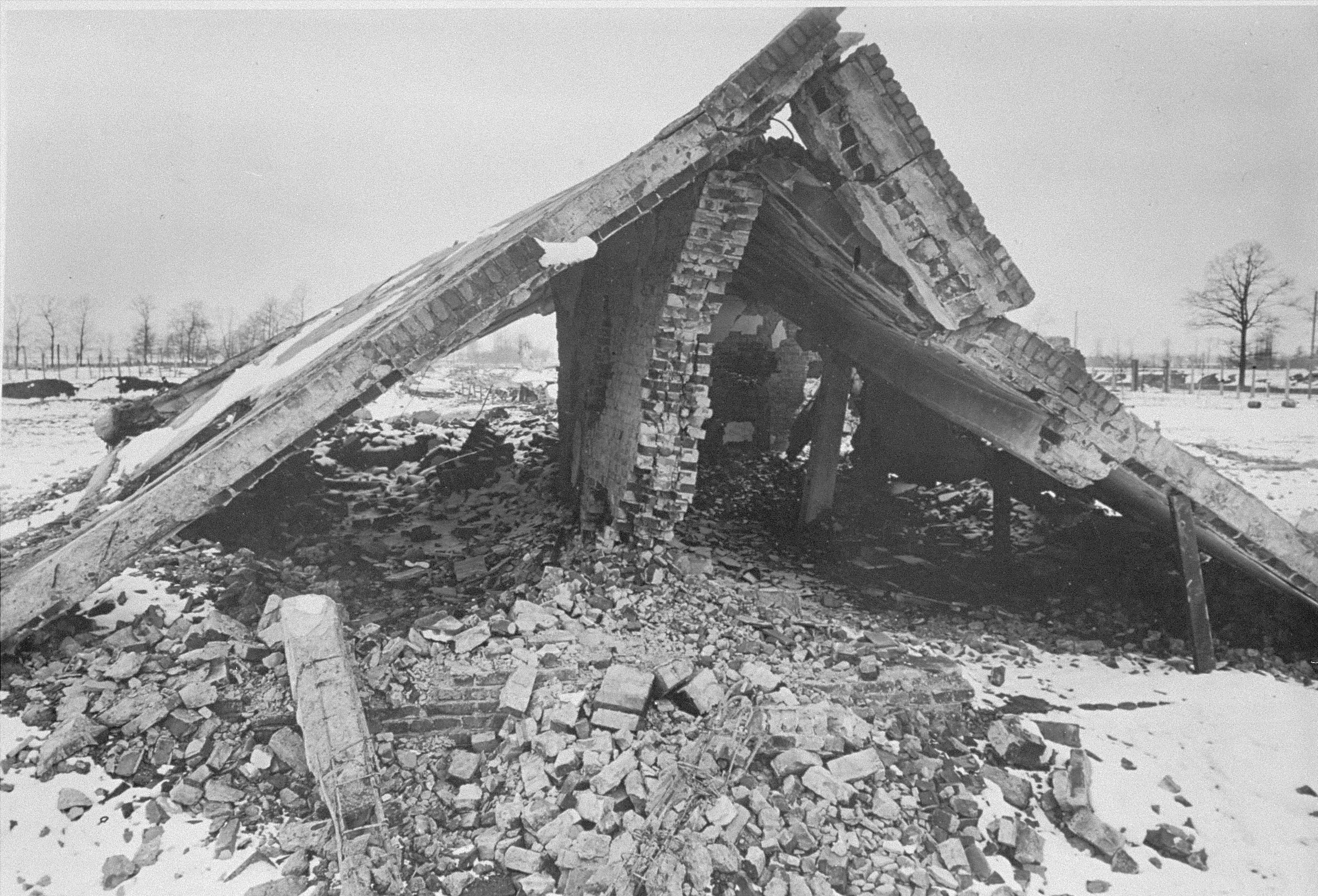
Read the exhibit’s Bibliography
Read the exhibit’s Bibliography
